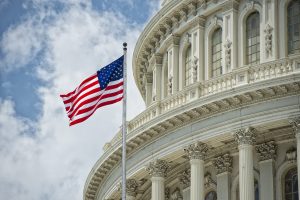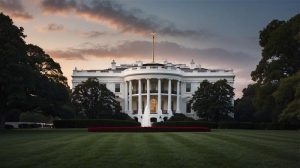On the back of the screeching handbrake turn by major Central Banks, financial markets are showing signs of extreme confusion: while equity markets still seems to be in “insurance policy” mode, bond markets have moved to price in a higher likelihood of recession.
It is most evident in the astounding appetite for the safest of assets: government bonds. In Germany, where figures this week showed that the economy is shrinking, interest rates are negative all the way from overnight deposits to 30 year bonds!) Investors who buy and hold bonds to maturity will make a guaranteed cash loss. In Switzerland negative yields extend all the way to 50 year bonds. Even in indebted and crisis-prone Italy, a 10 year bond gets you only 1.5%.
In America the curve is inverted (rates on 10 year bonds are lower than on 3 month bills), a rare occurrence that could be a harbinger of recession.
Angst is evident elsewhere, too:
- Over half of the world’s bond markets are trading below the Federal Reserve (Fed) funds rate.
- Gold is at a six-year high. Copper prices, a proxy for industrial health, are down sharply.
- Despite Iran’s seizure of oil tankers in the Gulf, oil prices have sunk to $60 a barrel.
- Organisation for Economic Co-operation and Development’s (OECD) composite of leading indicators fell in June for the 18th consecutive month (the longest stretch of weakness since the great recession).
- China’s auto sales fell again in July (the 5.3% year-on-year decline is the 13th negative reading in the past 14 months).
The fear of a weaker global economy that turns recessionary amid an extended trade shock is challenging the idea that the Fed is set for just a “mid-cycle adjustment to policy”. The latest central bank action will also play a key role in expanding the universe of negative-yielding debt, as investment mandates require managers to buy government bonds. As yields fall, so managers buy more in order to stay balanced versus their respective fixed-income benchmarks. This only expands the tide of negative-yielding debt, and places downward pressure on other global sovereigns with positive yields such as Australia, Canada and the US.
The coming Fed rate cuts will keep the economy ticking for a while, but will do little to reactivate the economy and avoid the upcoming significant slowdown. Even before the Fed did a thing, the yield on the 10 year Notes fell by 1.30%, which helped drag down a gamut of borrowing costs priced off the Treasury curve, but there has been no lift for the auto and housing sector:
- Car sales fell 2.0% in July on top of a 1.3% slump in June (and have now declined in three of the past four months).
- Existing home sales dropped 1.7% in June even with much lower mortgage rates — they have been flat or down in three of the past four months, and have declined by 11% at an annual rate over this time frame.
Conclusion: The private sector in the US has so much debt that lowering the cost of credit will not cause the kind of demand reaction that historical standards suggest.
The main danger is that of a profit recession in the US. The past decade has been great for companies, with record profit margins due to lower corporate tax rates, low cost of capital and very moderate wage growth, the issue now is not that margins fall off a cliff (we will not have inflation all of a sudden), but that further improvement in margins is off table and they are going one way: down.
In Europe, the ECB was confronted with slowing economic growth, uncertain politics and wobbly markets, and so it reliably came to the rescue with new stimulus measures and a deferral of the start to any normalisation of interest rates. A low-growth, low-inflation environment, along with a negative deposit rate and ample central bank liquidity, bears a striking resemblance to post-bubble Japan. Long live QE!
To sum up, we are heading for a prolonged stagnation, driven as much by political uncertainty as underlying fundamentals.
To read the full Macro please read here




